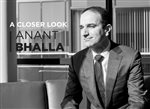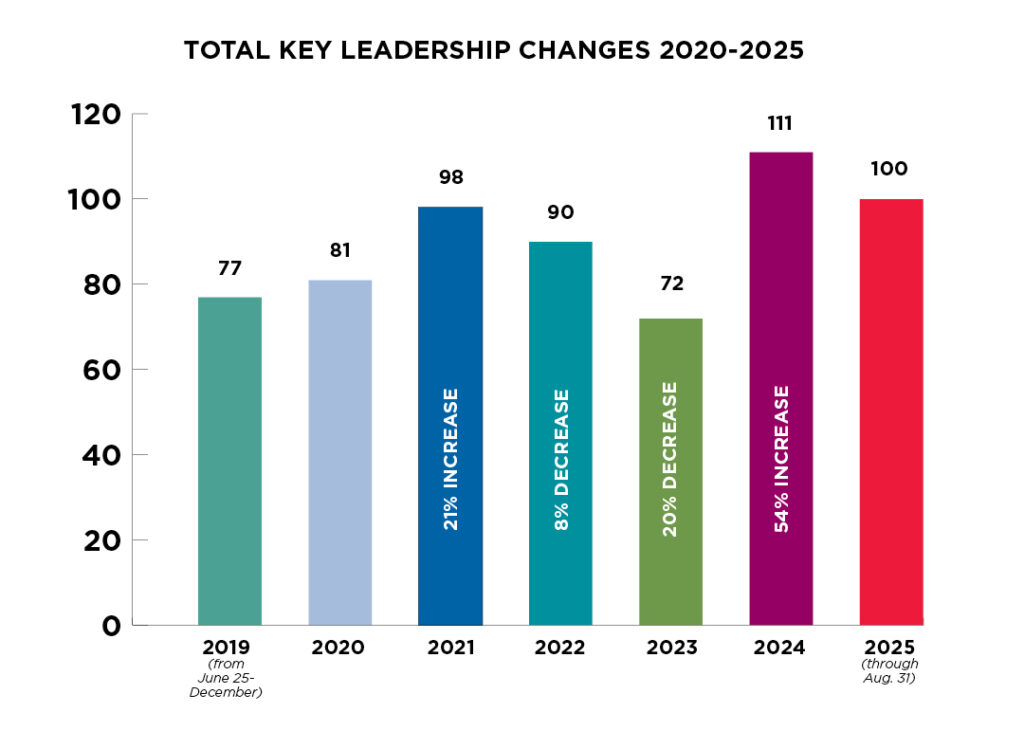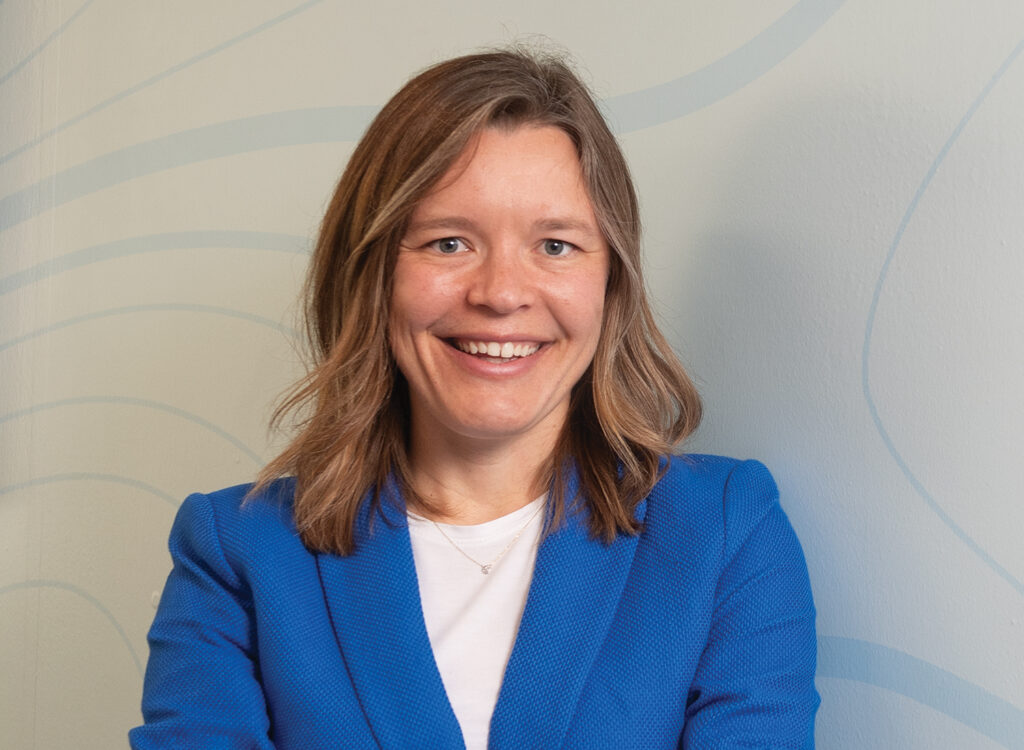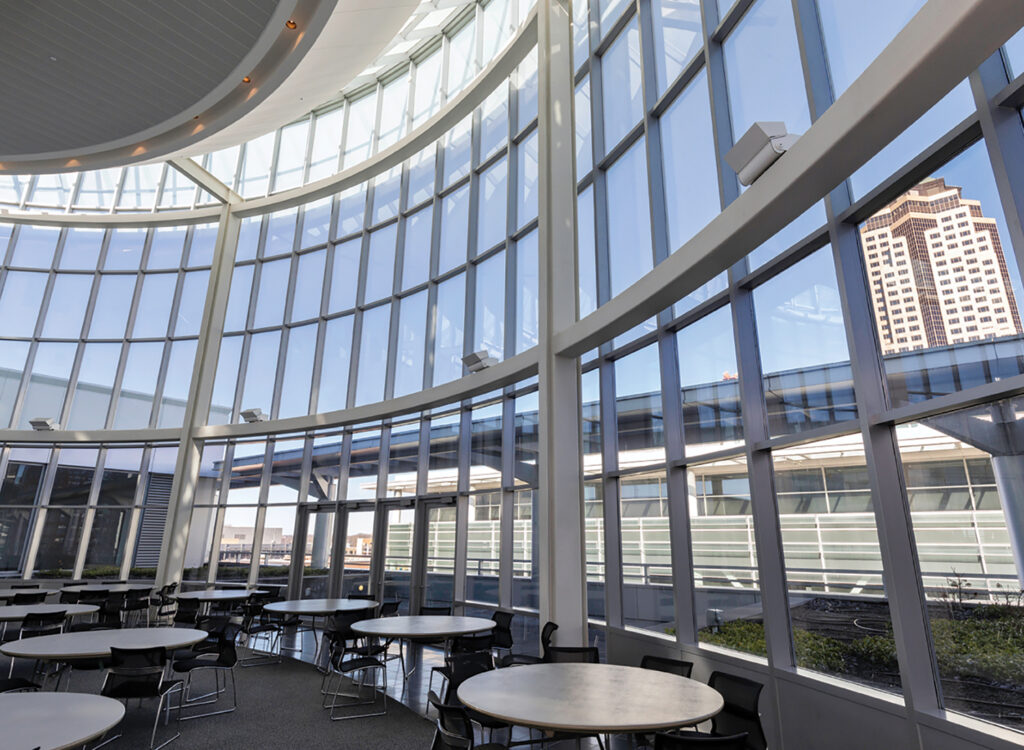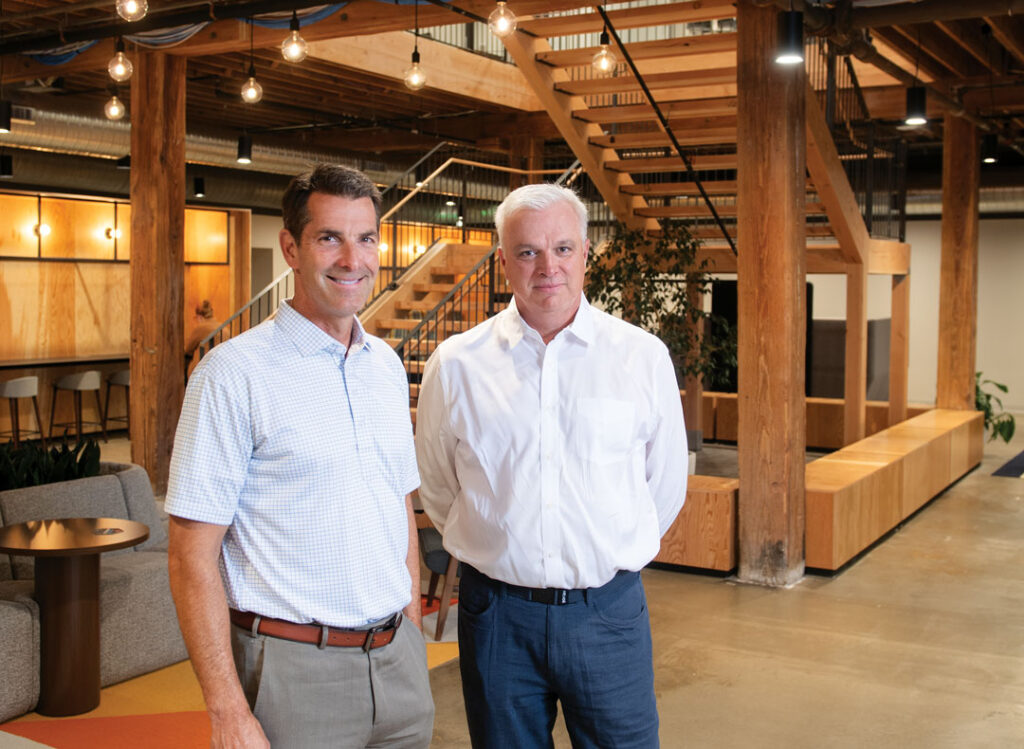A Closer Look: Anant Bhalla
Take a closer look at the president & CEO of American Equity Life

Shortly after the historically destructive high winds of the derecho struck Central Iowa on Aug. 10, Anant Bhalla witnessed his team at American Equity Investment Life Holding Co. in some of its finest hours.
The majority of the West Des Moines annuity company’s headquarters staff was working remotely due to the pandemic when the derecho knocked out power and internet to about half of the company’s workforce. But working late into the night, the company rallied to get its customer service operations back up and running, quickly clearing a backlog of about 200 calls within just a couple of hours.
American Equity’s classic Midwestern-style response to the emergency affirmed a big reason the seasoned executive took the position earlier this year.
“They could have said, ‘That’s not my corner of the boat’ when the boat started leaking, but they all jumped in and started bailing,” Bhalla said.
“That edge is why this is such a compelling company to move forward.”
Founded in December 1995 by David Noble, American Equity within its first decade became a leader in the emerging fixed indexed annuity market, and was listed on the New York Stock Exchange as a publicly traded company in December 2003. As the late Noble told the Business Record 15 years ago: “We think that this company has already demonstrated that it has the ability to be in the top ranking of the financial services industry.” Noble’s successors were Wendy Waugaman, who led the company from 2008 until 2012, and John Matovina from 2012 until his retirement in March 2020.
Bhalla, who began his position as president and CEO of American Equity on Jan. 27, was most recently chief financial officer of Brighthouse Financial, a life and annuity business that he played a key role in launching as a spinoff from MetLife Inc. in mid-2017. He joined MetLife in 2014 as CFO of retail business.
Prior to MetLife, he held numerous senior roles including chief risk officer, treasurer and other management roles at Fortune 500 companies, including American International Group, Lincoln National Corp. and Ameriprise Financial. He most recently resided in Charlotte, N.C.
This is Bhalla’s second executive position in the Midwest; with Ameriprise he worked in Minneapolis for nearly nine years. At the time, the company was known as IDS Life under American Express.
“I view American Express as my training ground,” he said. “I spent a lot of time in the investments area and across multiple functions of Ameriprise Life, taking it public in 2005. At that time it was the third-largest spinoff of a company in America.”
After leaving Brighthouse in the spring of 2019, Bhalla launched Bhalla Capital Partners, focused on bringing together private capital and asset management capabilities to serve core unmet needs in the global life insurance sector.
“I was going to step out and build a company with private capital that would be a player in the annuity business, really focused on business lines like American Equity,” he said. It was at that point that he received a call from American Equity inviting him to interview to fill the seat of John Matovina, who was planning to retire.
Much like Bhalla, American Equity was also at an inflection point. The publicly traded company had been disclosing over the past couple of years that it was working out the strategy for its own future for its next quarter-century. Among the considerations were several new players that had entered the annuity market in recent years, backed by private equity owners.
Its new strategy, which the company calls American Equity 2.0, will be implemented over the next three to five years, led by Bhalla.
“The first 25 years of the company had gone down very well, and the company was ready for a new chapter … to reinvigorate the purpose of the company,” he said. “My predecessor [John Matovina] did a tremendous job of moving the company forward from being a founder-led company to a professionally managed company — it had industrialized its foundation. And now with that foundation, what was the right pivot?”
Several weeks after the Business Record’s interview with Bhalla, American Equity announced on Oct. 1 it had received a $3 billion takeover bid in a joint offer by Athene Holding Ltd. and MassMutual. Less than three weeks later, American Equity announced it had rejected that offer and had entered into a strategic partnership for Brookfield Asset Management to acquire a stake in the company through a stock purchase and reinsurance arrangement.
In a wide-ranging interview with the Business Record before these events, Bhalla provided a closer look at his leadership style and the path forward that he and American Equity’s board envision for the company.
What sets a fixed index annuity company like American Equity apart in what it provides clients?
If you are the largest bank or the largest asset manager, you can’t give your client a guarantee. Only an insurance company is endowed with the regulatory environment and the skills to actuarially assess and to invest to give you a guarantee. We work both sides of the balance sheet. We make a promise, a guarantee of the dignity of a paycheck for life. That goes onto one side of our balance sheet as a liability. And then we take in money and invest it on the other side of the balance sheet. A bank has one side of the balance sheet — they don’t have long-term funding and assets. And a money manager doesn’t have its own money, it manages other people’s money, predominantly, and charges a fee.
We believe that the difference we make is that when a customer, the agent or adviser who brings in paying clients, that when either of those clients comes in contact with our company, the interactions they have … they don’t just show up for a paycheck, they show up to make a difference. That always comes across.
How does your leadership philosophy match American Equity’s approach?
My leadership style — I think about Gen. Norman Schwarzkopf, who said that leadership is a lot about courage and character. I say that because if you’re a CEO, the worst thing you can do is not make a decision. … As a leader, be very clear: What is the purpose; what is the mission; what is the hill we’re trying to take? There has to be cohesion. Like my example of the leaking boat, we’ve got to make sure we’re all working together in the boat. And then provide that communication. That’s the glue that binds people together and aligns them with the greater purpose. The employee showing up in the mailroom is as important as the employee showing up in the investment department, because those are the touch points with both sets of our customers. So as a leader having the courage and character to communicate the what and the why of what we are doing in a consistent manner.
What do you see as the short- and long-term outlook for the indexed annuity market?
In the short term, I think the pandemic is a humanity crisis — it’s unprecedented and it requires safety and security. … So it requires responsibility in actions and business models. We have a really strong, fortress balance sheet. So we’re not on the back foot; we’re always ready to be on the front foot, to be on the offensive. … Having a fortified balance sheet and an operating model that’s resilient while working remote so that we’re ready to look at the opportunities.
COVID-19 economically reset the reality for many industries, and one needs to think about the obsolescence risk or the resilience of certain industries. For example, we invest in real estate, and it’s a great asset class. … Just look at warehouse facilities. There are a lot of warehouse facilities that work using pallet-based systems, like containers. Those really don’t work in an e-commerce world, where a lot of deliveries are happening to homes. Those have more pouch-based or bin-based storage systems. The cost of refitting a traditional warehouse to be an e-commerce warehouse is more expensive than building an e-commerce warehouse from scratch. There are numerous examples in the real estate business that are worthy of examining resilience and obsolescence. … We believe we’re in a position of an almost record level of balance sheet strength to be able to evaluate the new future for the economic model.
The second point I would make is we don’t know what the [government’s] fiscal response will be. But a fiscal response having a huge investment in new infrastructure or rebuilding of aging infrastructure is a great opportunity for insurance companies that make the long-term promises to finance the rebuilding of American infrastructure. … But the rebuilding is going to happen in an environment of what economists call financial repression, which means interest rates are going to stay down … and you have to operate in that environment [to try to earn a decent investment spread].
I would say I’m a realistic optimist who believes the role that we play in the industry is only getting greater because we provide the dignity of a paycheck for life, or protective accumulation products. That need is not going to go away. But in the environment we’re in, opportunities will be climatic, so there will be pockets that will become obsolete and others that will become sustainable.
Do you anticipate significant changes for American Equity in the next year or two with new initiatives or expansions?
Yes. We are proud as a team to embrace American Equity 2.0; we want to dominate the general account annuity business [including] indexed annuities, but also broadly all fixed annuities. Not by just having greater market share, but having greater wallet share through multiple channels. We were almost a founding company, along with a few others like Allianz, in the independent agent channel. We have slipped a little in that; we want to continue to regain some footing in that business.
There are four cogs in our strategy to do that. The first is how we go to market — our sales and distribution model and how we think about product design and customer service. … [It needs] to be more digitized to meet clients where they are. We will be unveiling that initiative in the next six months.
The second cog: investing in physical assets such as real estate and infrastructure to generate greater alpha [active return on investment]. That is an area of focus to do ourselves and with the right partners. We are a pretty large company; we have over $53 billion in investments, so when we sit down with an asset manager, we can meaningfully move the dial.
The third cog: This business is all about cash profitability. … The distribution companies and asset management companies make cash flow pretty early in the life cycle; the insurance company makes its profit in the end — six, eight or 10 years out. So to be a growth company that’s also cash-flow generative, we will look to participate in the economics of our value chain partners — the distribution companies and asset management — for the benefit of our insurance holding company.
Last, but not least by any measure, is some foundational capabilities that allow us to be differentiated in the front line, the first three cogs — how we raise the money, how we service the money and how we invest the money. Those foundational capabilities are in technology, data analytics and talent — and getting that right is critical. Over the next three or four years with American Equity 2.0, you will see us emerge even stronger in the general-account annuity business, modernizing to where we really are a financial services company across the insurance value chain.
Will the annuity business remain the core product, with additional products in new markets?
Yes, the annuity business will remain our core foundational product chassis for the next three to five years. But while we become American Equity 2.0, we will develop foundational capabilities [in distribution and asset management]. … Internally, I use this analogy with the team a lot: We want to be [like] Coca-Cola, which used its foundation in the beverage business to diversify into bottled water and other businesses. We don’t think being a mono-line, annuity-focused company is a bad four-letter word. We want to build the capability in the next three to five years and then build out. … We want to be the Coca-Cola of the fixed annuity business, and that’s a great aspiration to have over the next three to five years. At the end of that we use those capabilities to curate the right client solutions for different potential offerings — whether it’s an insurance chassis or a non-insurance chassis.
We don’t think just growing another life insurance product, for example, is the right strategy. Because you have to be dominant in your core business to have cash profitability to invest and diversify. The grass is incredibly green right under our feet — we don’t have to look across the fence to see green grass somewhere else. There is incredibly green grass with macroeconomic tailwinds with the need for what our products can provide. No large bank can provide it; no asset manager can provide it.
Given your background in leading spinoffs of new public companies, is a spinoff something we might expect in the next few years?
It’s too early to say. Corporate transactions can be incredibly distracting. Our company has seen the effect of that in the last few years. We are actually more focused on what we can do ourselves, and where we can find the right partner. I think you will see us form partnerships where there is economic and strategic alignment, especially as we look, for instance, at differentiated capabilities in investments. We want to make a perfect alignment between our policyholders and our shareholders and whomever we partner with. … If we can prosper together as a network, that is the way to organize partnerships.
An analogy that I like to use is: We’re playing a nine-inning game; we’ll put singles and doubles on the board. And occasionally we’ll hit a home run, most likely with a partnership.
Have you and your family moved yet from Charlotte?
The family is still in Charlotte; we are frankly living between the two cities as we are navigating through this uncertain time of COVID. We most probably are not bringing the office beyond phase 1, which is 10%; we will probably wait for phase 2 until the new year. We’re guiding all employees to plan their personal lives with what works well for them.
We have bought a home that we love in the South of Grand [neighborhood] that we’re remodeling. Our 5-year-old is enrolled to start in school here next fall. I expect the family to move in the spring, but we’ll have to see how COVID plays out.

